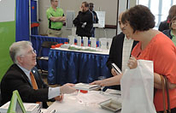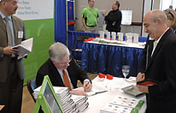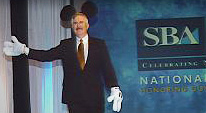The Reflexive Close
 Closing a sale is nothing more than asking for the sale. In the past, I have talked about how important it is to involve the customer in the selling process. Involving them in the process also includes involving them in the close of a sale whenever possible. The customer, whether they know it or not, actually starts the process for the reflexive close. The reflexive close begins when the customer asks a simple question such as, “Do you carry this in red?” You, as the salesperson, respond by saying, “It sure does, would you like yours in red?” Another quick example may go something like the customer asking if a CD player comes with that model of car. Your response would be something like, “Sure would you like the CD player mounted in the trunk of your new car?” As you have probably gathered by now, you want the customer to say yes to your question.
Closing a sale is nothing more than asking for the sale. In the past, I have talked about how important it is to involve the customer in the selling process. Involving them in the process also includes involving them in the close of a sale whenever possible. The customer, whether they know it or not, actually starts the process for the reflexive close. The reflexive close begins when the customer asks a simple question such as, “Do you carry this in red?” You, as the salesperson, respond by saying, “It sure does, would you like yours in red?” Another quick example may go something like the customer asking if a CD player comes with that model of car. Your response would be something like, “Sure would you like the CD player mounted in the trunk of your new car?” As you have probably gathered by now, you want the customer to say yes to your question.
There are two subtle techniques that one must be aware of when using the reflexive close if it is going to work. The first thing you must do is answer the customer’s question, remember that while you are trying to close the sale, the customer is still seeking information. If you fail to provide the information that satisfies the customer’s question, then you run the risk of losing a sale that you have worked so hard to complete. However, if you take the time to answer the question, your prospect is more likely to see you as a person who cares about them and the questions they have.
The second aspect of the reflexive close involves possession of the item in question by the customer. It is important to use a word like “your” when stating your reflexive close question. If you look back at the examples we discussed above, you will notice that the word “your” was used in both examples. By using those types of words, you have all ready begun to transfer ownership of whatever you are selling. You have earned the right to make such assumptions because you have established trust and value with your customer through the selling process. At the very least, you have answered your customer’s question resulting in one more objection that is gone. The hope however, is that it will lead to a handshake and a sale.
FINAO - Brad Huisken - President, IAS Training























